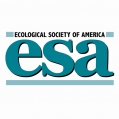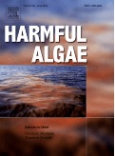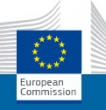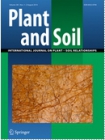 The biotic ligand model (BLM) is a bioavailability model for metals based on the concept that toxicity depends on the concentration of metal bound to a biological binding site; the biotic ligand. Here, we evaluated the BLM to interpret and explain mixture toxicity of metals (Cu and Zn). The mixture toxicity of Cu and Zn to barley (Hordeum vulgare L.) was tested with a 4 days root elongation test in resin buffered nutrient solutions.
The biotic ligand model (BLM) is a bioavailability model for metals based on the concept that toxicity depends on the concentration of metal bound to a biological binding site; the biotic ligand. Here, we evaluated the BLM to interpret and explain mixture toxicity of metals (Cu and Zn). The mixture toxicity of Cu and Zn to barley (Hordeum vulgare L.) was tested with a 4 days root elongation test in resin buffered nutrient solutions.
News
GhEnToxLab at the ESA annual meeting
Founded in 1915, the Ecological Society of America has strived to stimulate and promote ecological science for nearly a decade. Over the years, it has steadily grown from the original (mostly American) 307 members to an astounding 10.000 international members today. It is the single largest community of professional ecologists in the world and therefore a reliable and critical source of ecological knowledge. Its core business is to improve the communication among scientists as well as raising public awareness through their yearly conference. Today, their 99th anual meeting kicks off in Sacramento (California, USA) and our resident ecologist Jan Baert will be there. During his pitch presentation (COS 57-6), he will explain how the effects of biodiversity on community functioning shifts along a toxic gradient. Read more about his research below to discover the venue.
Toxicity of lead (Pb) to freshwater green algae: Development and validation of a bioavailability model and inter-species sensitivity
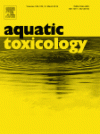 Scientifically sound risk assessment and derivation of environmental quality standards for lead (Pb) in the freshwater environment are hampered by insufficient data on chronic toxicity and bioavailability to unicellular green algae. Here, we first performed comparative chronic (72-h) toxicity tests with three algal species in medium at pH 6, containing 4 mg fulvic acid (FA)/L and containing organic phosphorous (P), i.e. glycerol-2-phosphate, instead of PO43− to prevent lead-phosphate mineral precipitation. Pseudokirchneriella subcapitata was 4-fold more sensitive to Pb than Chlorella kesslerii, with Chlamydomonas reinhardtii in the middle. The influence of medium physico-chemistry was therefore investigated in detail with P. subcapitata. In synthetic test media, higher concentrations of fulvic acid or lower pH protected against toxicity of (filtered) Pb to P. subcapitata, while effects of increased Ca or Mg on Pb toxicity were less clear. When toxicity was expressed on a free Pb2+ ion activity basis, a log-linear, 260-fold increase of toxicity was observed between pH 6.0 and 7.6. Effects of fulvic acid were calculated to be much more limited (1.9-fold) and were probably even non-existent (depending on the affinity constant for Pb binding to fulvic acid that was used for calculating speciation).
Scientifically sound risk assessment and derivation of environmental quality standards for lead (Pb) in the freshwater environment are hampered by insufficient data on chronic toxicity and bioavailability to unicellular green algae. Here, we first performed comparative chronic (72-h) toxicity tests with three algal species in medium at pH 6, containing 4 mg fulvic acid (FA)/L and containing organic phosphorous (P), i.e. glycerol-2-phosphate, instead of PO43− to prevent lead-phosphate mineral precipitation. Pseudokirchneriella subcapitata was 4-fold more sensitive to Pb than Chlorella kesslerii, with Chlamydomonas reinhardtii in the middle. The influence of medium physico-chemistry was therefore investigated in detail with P. subcapitata. In synthetic test media, higher concentrations of fulvic acid or lower pH protected against toxicity of (filtered) Pb to P. subcapitata, while effects of increased Ca or Mg on Pb toxicity were less clear. When toxicity was expressed on a free Pb2+ ion activity basis, a log-linear, 260-fold increase of toxicity was observed between pH 6.0 and 7.6. Effects of fulvic acid were calculated to be much more limited (1.9-fold) and were probably even non-existent (depending on the affinity constant for Pb binding to fulvic acid that was used for calculating speciation).
Microplastics in bivalves cultured for human consumption
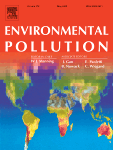 Today, 27 years after Cpt. Charles J. Moore first discovered the Great Pacific Garbage Patch, marine plastic pollution continues to be a growing threat to the marine environment. As plastic debris is ubiquitious across the world's seas and oceans, the consequences of macroplastics for most (vertebrate) wildlife have been identified over the years. Yet, to date, the impacts of microplastics are less understood. These plastic particles (< 1mm), which are found in cosmetics and can be formed through the degradation of larger plastic items, are becoming increasingly abundant. As our research has shown, they can now be found from the surface layer all the way down to the deep-sea sediment. Worringly, microplastics can be ingested by a wide range of marine organisms because of their small dimensions which in turn creates an understudied risk of exposure for human consumers. Here we present the first study to report on the possible consequences of marine microplastics for human consumers by analysing the occurence of microplastics in commercially available shellfish. From our results, we calculated that the average European shellfish consumer has an uptake of 6400 microplastics per year. As there is a lack of (mammal) effect studies, this exposure poses an unknown risk for human health.
Today, 27 years after Cpt. Charles J. Moore first discovered the Great Pacific Garbage Patch, marine plastic pollution continues to be a growing threat to the marine environment. As plastic debris is ubiquitious across the world's seas and oceans, the consequences of macroplastics for most (vertebrate) wildlife have been identified over the years. Yet, to date, the impacts of microplastics are less understood. These plastic particles (< 1mm), which are found in cosmetics and can be formed through the degradation of larger plastic items, are becoming increasingly abundant. As our research has shown, they can now be found from the surface layer all the way down to the deep-sea sediment. Worringly, microplastics can be ingested by a wide range of marine organisms because of their small dimensions which in turn creates an understudied risk of exposure for human consumers. Here we present the first study to report on the possible consequences of marine microplastics for human consumers by analysing the occurence of microplastics in commercially available shellfish. From our results, we calculated that the average European shellfish consumer has an uptake of 6400 microplastics per year. As there is a lack of (mammal) effect studies, this exposure poses an unknown risk for human health.
Inferring time-variable effects of nutrient enrichment on marine ecosystems using inverse modelling and ecological network analysis
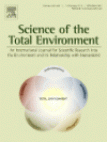 Despite the restrictions imposed by the ever increasing legislation, anthropogenic nutrient inputs continue to be a worldwide threat to our marine ecosystems. The resulting elevated nitrogen and phosphorus concentrations can promote intensive algal blooms which may decrease transparancy, deplete oxygen and change the composition of the fish community. In recent years, these ecosystem-level consequences of anthropogenic nutrient enrichment are being studied from a topological perspective (ie. who eats whom). However, it has been noted that this perspective is insufficient to understand the magnitudes of energy and materials that flow through natural food webs. To circumvent this, we used a mesocosm approach combined with linear inverse modelling to estimate carbon flows in a foodweb subjected to different nutrient treatments. In doing so, we found that the systems activity is positively but nonlinearly affected by the addition of nutrients. Surprisingly, detritus appears to be a crucial, if not predominant, driver of the ecosystem functioning under all nutrient conditions.
Despite the restrictions imposed by the ever increasing legislation, anthropogenic nutrient inputs continue to be a worldwide threat to our marine ecosystems. The resulting elevated nitrogen and phosphorus concentrations can promote intensive algal blooms which may decrease transparancy, deplete oxygen and change the composition of the fish community. In recent years, these ecosystem-level consequences of anthropogenic nutrient enrichment are being studied from a topological perspective (ie. who eats whom). However, it has been noted that this perspective is insufficient to understand the magnitudes of energy and materials that flow through natural food webs. To circumvent this, we used a mesocosm approach combined with linear inverse modelling to estimate carbon flows in a foodweb subjected to different nutrient treatments. In doing so, we found that the systems activity is positively but nonlinearly affected by the addition of nutrients. Surprisingly, detritus appears to be a crucial, if not predominant, driver of the ecosystem functioning under all nutrient conditions.
Are there species-specific tolerances towards cyanobacteria in Daphnia?
Cyanobacterial blooms have been a growing environmental concern due to their ability to produce toxins. Yet to date, few studies have focused on comparing the effects of different cyanobacteria. In this publication, we determined the effects of six common cyanobacteria on two keystone species in the aquatic environment, Daphnia magna and Daphnia pulex. Sensitivity depended upon the concentration of the cyanobacteria and differed between the Daphnia species. The publication of this paper coincided with the recent webinar
Prof. Janssen explains the relevance of the EU SCHER to 22.000 readers... in 23 languages
While conducting innovative research to improve the ecological risk assessment of chemicals remains the core business of the GhEnToxLab, we actively encourage societal participation, social debate and public outreach. In light of this, Prof. Dr. Colin Janssen, chair of the European Scientific Committee on Health and Environmental Risks (SCHER), explains the role of SCHER in the European decision making. In 23 languages!
Microplastics in the news: radio interviews with Prof. Janssen
Due to the rapidly growing scientific and public awareness on the occurrence and adverse effects of microplastics, news on microplastic usage and research is increasingly being picked up by the mainstream media. Just last month, it was shown that the polar ice caps harbour vast amounts of microplastics which could be released through global warming. A few weeks later, the state of Illinois passed legislation which will ban the manufacture of microbead containing products by 2018. As a leading authority on microplastic research in Belgium, Prof. Dr. Colin Janssen of the GhEnToxLab was asked to elaborate on these news items by the national radio channel Radio 1. You can listen again to these interviews on the website of Radio 1 (Dutch spoken).
Francqui Foundation Fellowship for GhEnToxLab member Dr. Jana Asselman
 Dr. Jana Asselman (GhEnToxLab) received a Francqui Foundation Fellowship of the Belgian American Educational Foundation for the year 2014-2015 (BAEF). The fellowship is sponsored by the Francqui Foundation and is only awarded after a selection process based on the scientific excellence of the candidate and the research proposal. This year, nine researchers were awarded a Francqui Foundation Fellowship. This fellowship will allow Dr. Asselman to spend a year at Notre Dame University as a postdoctoral researcher (USA, www.nd.edu) and conduct innovative genomics research at the lab of Prof. Dr. Michael Pfrender. The project will focus on the genetic effects of metals to freshwater organisms exposed to salinity stress. Furthermore, this project will also provide a unique opportunity to strengthen the collaboration between GhEnToxLab and the lab of Prof. Pfrender. Congratulations, Jana!
Dr. Jana Asselman (GhEnToxLab) received a Francqui Foundation Fellowship of the Belgian American Educational Foundation for the year 2014-2015 (BAEF). The fellowship is sponsored by the Francqui Foundation and is only awarded after a selection process based on the scientific excellence of the candidate and the research proposal. This year, nine researchers were awarded a Francqui Foundation Fellowship. This fellowship will allow Dr. Asselman to spend a year at Notre Dame University as a postdoctoral researcher (USA, www.nd.edu) and conduct innovative genomics research at the lab of Prof. Dr. Michael Pfrender. The project will focus on the genetic effects of metals to freshwater organisms exposed to salinity stress. Furthermore, this project will also provide a unique opportunity to strengthen the collaboration between GhEnToxLab and the lab of Prof. Pfrender. Congratulations, Jana!
Are interactive effects of harmful algal blooms and copper pollution a concern for water quality management?
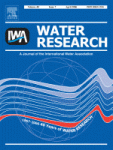 Cyanobacteria, commonly known as harmful algae due to their adverse effects on aquatic organisms, are a major concern to water quality. While it is well-known that cyanobacteria reduce the fitness of Daphnia sp., their combined effects with chemicals have hardly been documented. In our recent paper, we investigate how cyanobacteria act together with copper, commonly used in algaecides and fungicides, to impact the model organism Daphnia. The results show that cyanobacteria and copper together can considerably impair daphnid reproduction but that their combined effects are overall close to expectations based on their individual toxicities and hence of limited concern for water quality management.
Cyanobacteria, commonly known as harmful algae due to their adverse effects on aquatic organisms, are a major concern to water quality. While it is well-known that cyanobacteria reduce the fitness of Daphnia sp., their combined effects with chemicals have hardly been documented. In our recent paper, we investigate how cyanobacteria act together with copper, commonly used in algaecides and fungicides, to impact the model organism Daphnia. The results show that cyanobacteria and copper together can considerably impair daphnid reproduction but that their combined effects are overall close to expectations based on their individual toxicities and hence of limited concern for water quality management.

